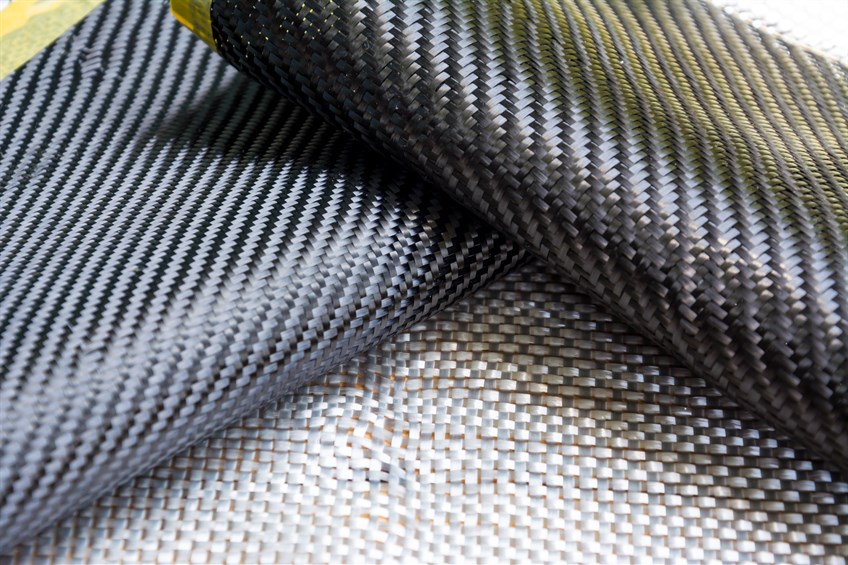
As a material, glass fiber can be used in areas such as composite airframes, interior components, canopy components, electronic shielding, and insulation. For example, the diverse range of possibilities for components manufactured from or incorporating glass fiber for the aerospace industry is staggering.
Lightweight Advantage for Fuel Efficiency
Space and weight constraints and limits are the reality for the aerospace business. For example, when a commercial aircraft is being designed, lower weight will result in less fuel burn, which can mean reduced costs, but equally a lower amount of fossil fuel emissions released. Glass fiber looks like an advantageous option as it delivers an uncommon ratio of mechanical properties to weight. Glass fiber composites can offer similar mechanical properties at a lower weight when compared to conventional metals such as aluminum or steel. The weight of the material is vital not only for air carriers but also for supplies for spacecraft, which will need to be considered from a weight point of view.
Superior Mechanical Strength
Glass fiber is incredibly robust for its weight—in reality, its tensile strength is similar to or sometimes stronger than that of steel, and that quality of mechanical performance makes it better for structural components that are substantially loaded or stressed, such as flight systems. It is typically woven into fabric or chopped and set in resin for durable composite laminates, which have bulk aerospace applications—these laminates can also be reasonably shaped to make parts that absorb shock, resist fatigue, and take vibration, all of which are common for both commercial flight and space. Metals can fatigue and crack under cyclical stress; glass fiber is more durable and holds integrity longer.
Thermal Stability at Extreme Temperatures
The aircraft and spacecraft in which the glass fiber solutions will be used are subjected to large temperature changes, spanning from the cold temperatures that most astronauts experience at altitude to the extreme heating experienced on atmospheric reentry. Glass fiber materials also have tremendous thermal resistance as well, meaning dimensional stability in some extreme cases, as they don’t expand, contract, or warp easily, which is crucial in terms of keeping tight tolerances in aerospace applications. Composite glass fiber aerospace solutions will provide insulation and protection to components in engine compartments, heat shields, and exhaust systems concerning heat.
Corrosion Resistance and Durability
Glass fiber composites do not corrode or degrade, from most moisture, chemicals, or salt-laden environments, unlike metals, and such conditions are popular in aerospace applications. Corrosion resistance provides longer longevity of the components and less reliance on expensive anti-corrosion treatments and protective coatings. Glass fiber components can be contained in both interior and exterior parts of the aircraft, which includes structural components, fairings, and radomes. In non-air and spacecraft environments such as radiation and vacuum environments, glass fiber has inert properties.
Electrical Insulation Capabilities
As we move into electronic aircraft designs, it is becoming essential to isolate as well as shield electrical systems. Glass fiber is an excellent electrical insulator and does not conduct electricity under high voltage. It is usually used to make enclosures, circuit boards, cables, as well as insulative barriers in avionics systems. It safeguards sensitive tools from electromagnetic interference, static discharge, as well as potentially even fire from an electrical fault. Glass fiber is also a non-magnetic, non-conductive material, which supports minimal interference from radar and other onboard communication systems. It is the ideal material for electronic components to use in aerospace applications.
Enhanced Fire Resistance
Inherently, glass fiber has flame-resistant properties. It is not easily ignited and, when burning, produces little smoke or toxic emissions. If combined with fire-retardant resins, glass fiber composites meet aerospace flammability requirements. When utilized in passenger cabin interiors, like wall panels, ceiling panels, or other elements, or for seat frames, glass fiber solutions enhance fire safety. In spacecraft, where fire containment is a high priority, glass fiber can help isolate electrical systems and fuel tanks to mitigate fire hazards.
Cost-Effective Manufacturing and Maintenance
Although carbon fiber has greater performance capabilities, glass fiber could be a higher-volume alternative when extreme strength is not mandatory. However, the procedure of manufacturing glass fiber composites needs minimal energy and material costs. Additionally, the corrosion and fatigue resistance of glass fiber parts means parts will have to be replaced or repaired less often. Glass fiber solutions can provide a performance-to-cost ratio, especially for projects that are budget-limited or components that have only moderate performance requirements.
Wrapping Up
With its inherent multi-functional properties, glass fiber is in lockstep with stringent criteria in aviation and space. No matter how high-performance, safe, cost-effective, and sustainable we want our materials to be, we continue to search. Whether commercial jets, military jets, or deep space probes, aerospace glass fiber solutions will provide the performance and durability needed to conquer the skies and beyond.